Related Research Articles

Pashto is an Eastern Iranian language in the Indo-European language family. It is known in historical Persian literature as Afghani.

Sayyid is an honorific surname of Muslims recognized as descendants of the Islamic prophet Muhammad through his grandsons, Hasan ibn Ali and Husayn ibn Ali, sons of Muhammad's daughter Fatima and his cousin and son-in-law Ali.
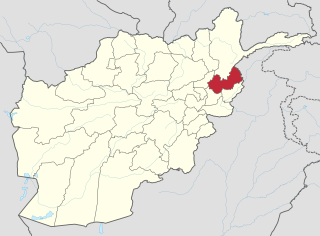
The Nuristani languages, also known as Kafiri languages, are one of the three groups within the Indo-Iranian language family, alongside the much larger Indo-Aryan and Iranian groups. They have approximately 130,000 speakers primarily in eastern Afghanistan and a few adjacent valleys in Khyber Pakhtunkhwa's Chitral District, Pakistan. The region inhabited by the Nuristanis is located in the southern Hindu Kush mountains, and is drained by the Alingar River in the west, the Pech River in the center, and the Landai Sin and Kunar rivers in the east. The languages were previously often grouped with Indo-Aryan or Iranian until they were finally classified as forming a third branch in Indo-Iranian.

Khowar, or Chitrali, is an Indo-Aryan language primarily spoken in Chitral and surrounding areas in Pakistan.

Dameli (دَميلي), also Damia, Damiabaasha or Gidoj, is an Indo-Aryan language of the Dardic subgroup spoken by approximately 5,000 people in the Domel Town, in the Chitral District of Khyber-Pakhtunkhwa province of Pakistan.

Kalasha is an Indo-Aryan language spoken by the Kalash people, in the Chitral District of Khyber Pakhtunkhwa province of Pakistan. There are an estimated 4,100 speakers of Kalasha. It is an endangered language and there is an ongoing language shift to Khowar.

Palula and also known as Ashreti (Aćharêtâʹ) or Dangarikwar, is an Indo-Aryan language spoken by approximately 10,000 people in the valleys of Ashret and Biori, as well as in the village of Puri in the Shishi valley and at least by a portion of the population in the village Kalkatak, in the Chitral District of Khyber Pakhtunkhwa province of Pakistan.

Gawar-Bati or Narsati is an Indo-Aryan language spoken in the Chitral region of northern Pakistan, and across the border in Afghanistan. It is also known as Aranduyiwar in Chitral because it is spoken in Arandu, which is the last village in lower Chitral and is also across the border from Berkot in Afghanistan. There are about 9,000 speakers of Gawar-Bati, with 1,500 in Pakistan, and 7,500 in Afghanistan. The name Gawar-Bati means "speech of the Gawar", a people detailed by the Cacopardos in their study of the Hindu Kush.

The Yidgha language is an Eastern Iranian language of the Pamir group spoken in the upper Lotkoh Valley of Chitral in the Khyber Pakhtunkhwa province of Pakistan. Yidgha is similar to the Munji language spoken on the Afghan side of the border.
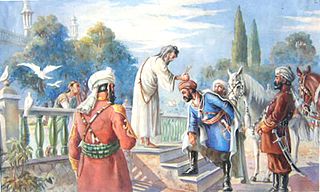
The Durrānī, formerly known as Abdālī (ابدالي), are one of the largest tribes of Pashtuns. Their traditional homeland is in southern Afghanistan, straddling into Toba Achakzai in Balochistan, Pakistan, but they are also settled in other parts of Afghanistan and parts of Khyber Pakhtunkhwa in Pakistan.
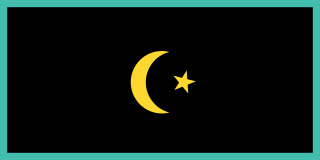
The Khanate of Khiva was a Central Asian polity that existed in the historical region of Khwarezm in Central Asia from 1511 to 1920, except for a period of Afsharid occupation by Nader Shah between 1740 and 1746. Centred in the irrigated plains of the lower Amu Darya, south of the Aral Sea, with the capital in the city of Khiva, the country was ruled by a Turco-Mongol tribe, the Khongirads, who came from Astrakhan. It covered present western Uzbekistan, southwestern Kazakhstan and much of Turkmenistan before Russian arrival at the second half of the 19th century.

Mian Iftikharuddin was a Pakistani politician, activist of the Indian National Congress, who later joined the All-India Muslim League and worked for the cause of Pakistan under the leadership of Muhammad Ali Jinnah.
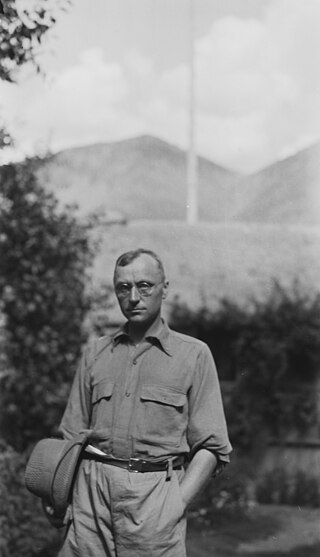
Georg Valentin von Munthe af Morgenstierne was a Norwegian professor of linguistics with the University of Oslo (UiO). He specialized in Indo-Iranian languages.

Ormuri Persian: زبان ارموری; literally, "Ormuri language") also known as Baraki, Ormur, Ormui or Bargista is an Eastern Iranian language spoken in Southeast Afghanistan and Waziristan. It is primarily spoken by the Burki people in the town of Kaniguram in South Waziristan and Logar, Afghanistan. The language belongs to the Eastern-Iranian language group. The extremely small number of speakers makes Ormuri an endangered language that is considered to be in a "threatened" state.

Lars Rasch was a Norwegian jurist. He served as Mayor of Oslo and was a developer of the neighborhood of Homansbyen

The name Afghānistān means "land of the Afghans",the name "Afghan" originally referred to the Pashtun people. which originates from the ethnonym Afghan. Historically, the name Afghan mainly designated Pashtuns, the largest ethnic group of Afghanistan. The earliest reference to the name is found in the 10th-century geography book known as Hudud al-'Alam. The last part of the name, -stān is a Persian suffix for "place".
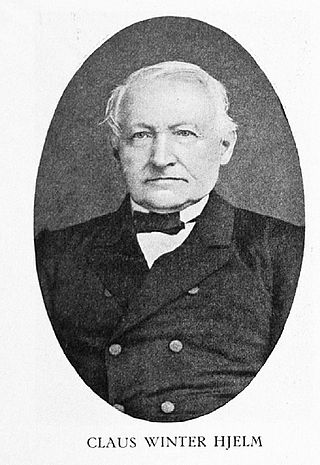
Claus Winter Hjelm, also known as Winter-Hjelm was a Norwegian legal scholar and judge.
Bagalgrom is a village in the Bashgal Valley of Nuristan, Afghanistan.

The Shattari or Shattariyya are members of a Sufi mystical tariqah that originated in Persia in the fifteenth century C.E. and developed, completed and codified in India. Later secondary branches were taken to Hejaz and Indonesia. The word Shattar, which means "lightning-quick", "speed", "rapidity", or "fast-goer" shows a system of spiritual practices that lead to a state of "completion", but the name derives from its founder, Sheikh Sirajuddin Abdullah Shattar.

Pashto dialects can be divided into two large varieties: Northern Pashto and Southern Pashto. Each of the two varieties of Pashto is further divided into a number of dialects. Northern Pashto is spoken in eastern Afghanistan, and central, northern and eastern Khyber Pakhtunkhwa. Southern Pashto is spoken to the south of it, in southern and western Afghanistan, southern Khyber Pakhtunkhwa and northern Balochistan. 'Ethnologue' divides Pashto into Northern, Southern and Central Pashto, and Wanetsi.
References
- ↑ The Encyclopædia Britannica: A Dictionary of Arts, Sciences, Literature and General Information. Hugh Chisholm. University press, 1911. Vol. 15 pg. 631
- ↑ My heartrendingly tragic story. By Muhammad Abdullah Khan Azar, Muhammad Abdullah Khan, Alberto M. Cacopardo, Ruth Laila Schmidt, Georg Morgenstierne, Knut Kristiansen Translated by Georg Morgenstierne, Knut Kristiansen. Novus, 2006. ISBN 82-7099-432-4, ISBN 978-82-7099-432-8. Pg 3.